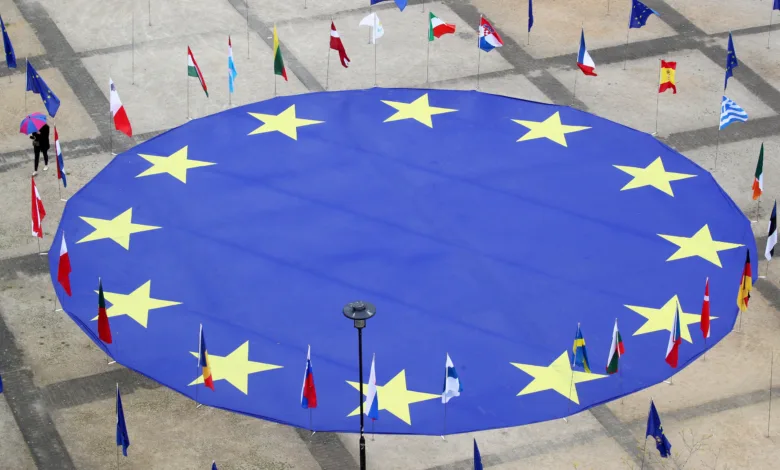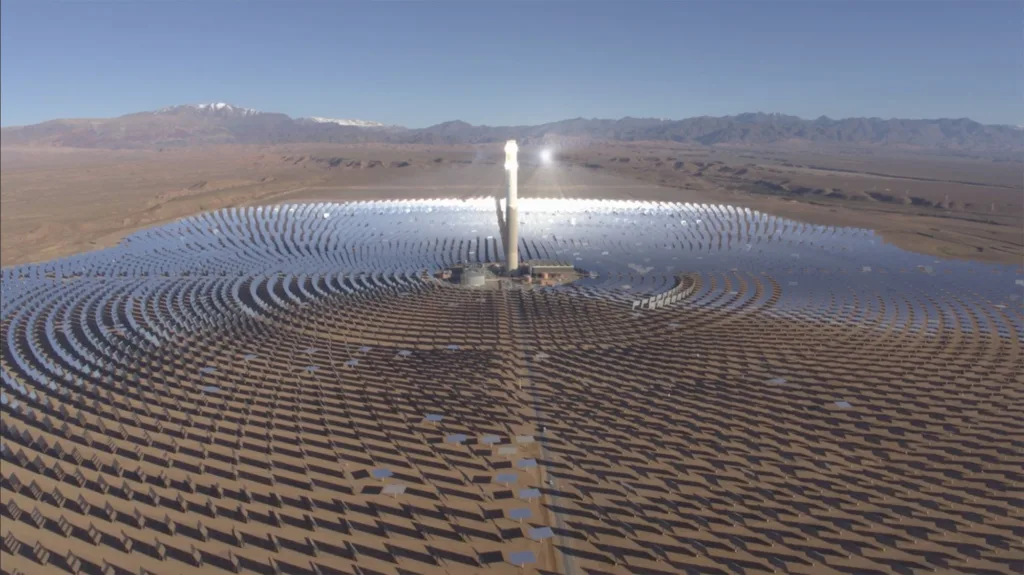

EU Shifts Away from Russian Gas and Oil
Russia’s war against Ukraine has accelerated efforts by The ‘EU to move away from the Russian Gas and Oil supply. sourced by the largest country in the world.
In the face of Russia’s unsettling actions in Ukraine, European countries are reshaping their energy strategies, seeking alternatives to the traditional reliance on Russia’s oil, gas, and coal. The ‘EU’s recent bans on Russian seaborne imports of fuel have significantly diminished Russia’s energy role in the EU, from a whopping 50% down to a mere 8%.
Morocco’s Solar Solutions Brighten Europe’s Energy Future
Amidst this energy renaissance, Morocco emerges as a bright spot, offering clean and sustainable energy solutions to Europe. According to the Washington Post, Morocco’s solar projects, including the impressive concentrated solar field near Ouarzazate, are positioned to provide Europe with clean energy through undersea power cables.


Morocco’s commitment to renewable power is highlighted by its agreement to supply the United Kingdom with solar energy, a deal spanning 2,361 miles and set to power up to seven million homes by 2030.
The potential impact is exceptional, with up to 15% of Europe’s electricity provided by North Africa potentially through wind power and solar projects. An alternative to Russian Oil and Gas.
EU Gears Up for the Post-Russian Gas Transit Era
Looking ahead, the European Union faces a turning point as the contract for the transaction of Russian gas through Ukraine expires in a year. European Commissioner for Energy Kadri Simson emphasizes the need for member states to brace for alternatives in the market and reduce their usage of Russian gas. The EU is diversifying its energy sources. 50% reduction in Russian gas imports in 2023 compared to the last year.
Simson, speaking at a press conference in Brussels, assures that Europe is well-prepared for the transition, with high gas storage levels and decreased reliance on Russian imports. It’s a collective sign to navigate this shift and redefine energy resources.
EU’s Energy Shift: A 58% Reduction in Russian Gas Imports
The European Union’s commitment to diversification is not just a statistic; it’s a tangible shift in the continent’s energy habits. There’s been a 58% reduction in the volume of Russian pipeline gas imports during the first nine months of the current year compared to the same period last year.
The European Statistical Office notes a significant decline from 36.4 million tons to 15 million tons. Even liquefied natural gas (LNG) imports have seen a 4% reduction.
This isn’t just about numbers; it’s about resilience, adaptability, and a willingness to explore cleaner energy alternatives. The EU’s embrace of the United States as the largest supplier of LNG, along with increased pipeline gas imports from Norway and Algeria, reflects a determination to break away from the familiar and seek sustainable solutions.
Robust Gas Storage Levels and Punitive Measures
Despite the geopolitical uncertainties, the EU’s gas storage facilities are not just cold, underground caverns, they’re a symbol of preparedness. Filled to 87%, exceeding the 60% level from the previous year, they’re a testament to strategic thinking and proactive measures.
The EU’s response to Russia’s actions includes a fifth round of punitive measures. It’s more than just economic sanctions, it’s a demonstration of unity and a stance against practices that threaten stability. The consideration of additional sanctions, including on oil imports, underscores the gravity of the situation and the EU’s commitment to safeguarding its energy future.
In navigating these challenges, Europe isn’t just safeguarding its energy future, it’s scripting a new chapter in its history. It’s about breaking away from the old, embracing the new, and paving the way for a more sustainable and resilient energy future. It’s not just a pivot, it’s a journey towards energy independence.






